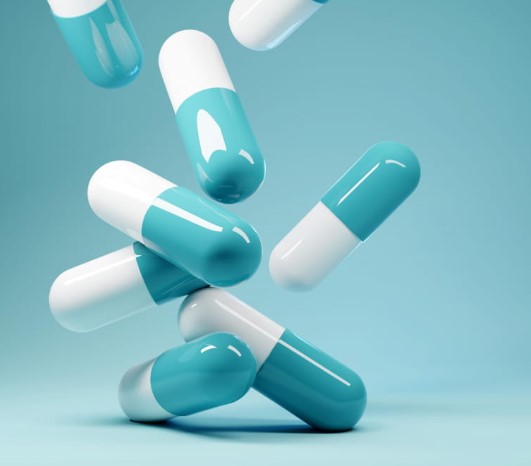History of antibiotics

Photo is illustrative in nature. From open sources.
Antibiotics are a group of medicines that are used to fight bacterial infections. They were discovered over a hundred years ago and have since become one of the most important medical discoveries in human history.
The history of antibiotics began with the discovery of Penicillin in 1928. Alexander Fleming, a British bacteriologist, discovered by accident that a mold that had grown on one of his bacterial cultures killed the bacteria. He named this mold Penicillin and began researching its properties.
However, the first experiments with Penicillin did not lead to success. This was due to the fact that Fleming could not get enough Penicillin for further research. But in 1939, two scientists - Ernest Cheyne and Howard Florey - began to work on the creation of penicillin in large quantities. They used the methods of biochemical technology and were able to obtain a large amount of Penicillin, which became available for medical use.
During World War II, penicillin was used to treat wounded soldiers. He saved the lives of thousands of people and became one of the most important drugs in the history of medicine.
After the discovery of Penicillin, scientists began looking for other antibiotics. Streptomycins and tetracyclines were discovered in the 1940s. Since then, many other antibiotics have been developed, such as ampicillin, cephalosporins, and macrolides.
However, with the advent of antibiotics, scientists are faced with a new problem - the resistance of bacteria to them. The use of antibiotics in large quantities has led to the fact that some bacteria have developed resistance to them and ceased to respond to treatment. This has led to the need to create new antibiotics and more careful use of existing ones.
In conclusion, the history of antibiotics is the history of scientific and medical discoveries that changed the world. They have become one of the most important medicines in human history and continue to save lives around the world. However, it must be remembered that the correct use of antibiotics is the key to maintaining their effectiveness in fighting infections.
Read together with it:
- Antibiotics in milk: the problem and ways to solve itMilk is a staple food that is widely used by people around the world. However, despite its benefits and popularity, there are concerns about the presence of antibiotics in milk. This is because some farmers may useantibiotics for the treatment of animals or the prevention of diseases, which may resu...
- Antibiotic tests pioneerTests forAntibiotics are an important tool in medicine for determining the sensitivity of bacteria to various antibiotics. A Pioneer in this field is a technique developed in the 1950s that can quickly and efficiently determine the effectiveness of antibiotics against specific microorganisms. In thi...
- My husband's attitude made me depressedI have been depressed for the last 2 years. I am 36 years old,married for 11 years, two children - 8 years and 4 years old. I haven’t worked for 8 years, I stay at home with the children.When the eldestI sent my daughter to kindergarten, she began to constantly get sick, after 7 months she was still...
- Green snot... When should you take antibiotics?Green snot is one of the symptoms that can accompany a cold or flu. Often people turn to antibiotics to get rid of green snot, but this may not be the right approach to treatment. Antibiotics are not a universal cure for all types of infections. They are only effective against bacterial infections, ...
- Antibiotics in buckwheat: myth or reality?Buckwheat is one of the most popular grain crops in Russia and other countries. Its high nutritional value and availability make it a favorite for many people. But is there a connection between buckwheat and antibiotics? There are many myths about what buckwheat containsantibiotics . However, scient...
- Antibiotics in fish: myth or reality?Fish is one of the most popular food all over the world. It is rich in proteins, vitamins and minerals, and also contains essential fatty acids, which are essential for human health. However, there is an opinion thatfish may containantibiotics , which are used in industrial fisheries to treat fish d...
- Antibiotics in flounder, myth or reality?The flounder isfish , which is very popular in many countries of the world. However, the use of flounder can lead to dangerous consequences, since this fish may containantibiotics . In this article, we will talk about 10 reasons why you should give up flounder. 1. Flounder may contain antibiotics. T...
- CefacetrilCefacetril is an antibiotic that belongs to the class of third-generation cephalosporins. It is used to treat various infections caused by bacteria, including pneumonia, sepsis, urinary tract infections, and skin infections. The action of cefacetril is based on its ability to destroy the cell walls ...
- CeftiofurCeftiofur is an antibiotic that belongs to the fourth generation cephalosporin class. It is widely used to treat infections caused by bacteria that are sensitive to this drug. Ceftiofur is highly active against gram-negative bacteria such as E. coli, Klebsiella, Proteus and Pseudomonas. It is also e...
- Can antibiotics be added to milk?Adding antibiotics tomilk is a topic that causes a lot of controversy and discussion. Some people believe that this is necessary to prevent diseases in animals and protect human health, while others believe that this can lead to serious problems. First, it is worth noting that adding antibiotics to ...
